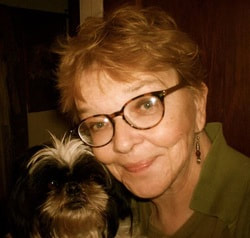 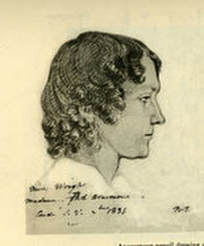 An 1835 Sketch of "Miss Wright" An 1835 Sketch of "Miss Wright" When she was a girl in Scotland, Frances or “Fanny” Wright fell in love with America, a new nation “consecrated to freedom.” On September 3, 1818, the 22-year-old writer set foot on that actual land of her dreams. She and her little sister Camilla, a pair of wealthy orphans, spent the next two years touring the young U.S. Young females did NOT go traveling without a man in those days, but Fanny believed that freedom should apply to women too! Her 1821 book about her travels won her the friendship of another freedom fan, the Marquis de Lafayette, who’d helped free America from the British Empire. In 1824, the old Frenchman made sure Fanny met his friend, 81-year-old Thomas Jefferson and his friend, 73-year-old James Madison. But wait – maybe you already see a fly in the soup. To Fanny, “slavery was revolting everywhere.” Slaves in the Land of Liberty was sickening! As much as she admired the two former presidents, she hated that they lived in slave-built mansions, waited on by people who had no choice but to do so. But slavery really did trouble them, too. Slavery trapped everyone in its evilness. With so much money tied up in costly human property, owners couldn’t afford to let them go. Could blacks support themselves, after lifetimes of being fed, housed, and denied education? Madison and Jefferson thought no; emancipation had to be gradual. Really, centuries of racial division had them and their countrymen thinking that the races could never live together. Surely blacks must go back to Africa! (In fact, many had already been sent there, to Monrovia, but that’s another story for another day.) So Fanny planned farms where blacks could learn while they earned their freedom money. It was her way of freeing her beloved America from the curse of slavery. She published her idea and tried to make it work on Nashoba, her own farm in Tennessee, but her experiment failed. Then, in the late 1820s, she went around the eastern US, making speeches about all of her freethinking ideas and shocking the daylights out of people. A public-speaking woman was unheard of! Going around, talking about abolition, day care for working mothers, the rights of women and factory workers? SHOCKING! That’s the thing to know about Fanny Wright: She was one stubborn radical, WAY ahead of her time, imagining freedoms she never lived to see. 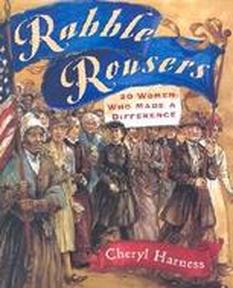 Cheryl Harness has written (and illustrated) short, spirited profiles of twenty women who impacted life in America by speaking out against injustice and fighting for social improvements. The book spans over two hundred years of American history and includes time lines for such important social movements as abolition, woman suffrage, labor, and civil rights. Readers inspired by these fiery women can use the civil action tips and resources in the back of the book to do some of their own rabble-rousing. For more information, click here. MLA 8 Citation
Harness, Cheryl. "Shocking Fanny Wright." Nonfiction Minute, iNK Think Tank, 1 Mar. 2018, www.nonfictionminute.org/the-nonfiction-minute/ shocking-fanny-wright.
0 Comments
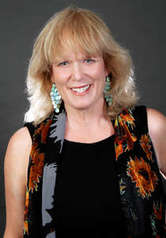 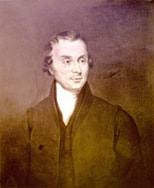 A long time ago in a land far, far away… The climate suddenly changes. It’s May, and a “Great Fog” appears in the sky. During the day it blocks out the sun and acts like a blanket trapping heat near the ground. A ten-year old boy notices that temperatures spike and sunsets are a spectacular display of colors. He doesn’t know that volcanoes in the “Ring of Fire” are spewing ash into the atmosphere creating massive clouds and causing the strange weather. All he knows is that he can’t take his eyes off the sky. The boy’s name is Luke Howard. The year is 1783, and his location is the English countryside. Luke records his observations in a journal. Although he doesn’t know it yet, he is on his way to becoming the “Father of Meteorology.” Flash forward twenty years. It’s 1803, and Luke Howard is a successful businessman. But in his spare time, ever since the summer of 1873, he’s been watching the clouds and thinking up new ideas about the weather. He writes and publishes a scientific paper and presents his ideas to a group of fellow amateur scientists. His article, “On the modification of clouds, and on the principles of their production, suspension and destruction,” classifies clouds into groups using Latin words: heaped (cumulus), layered (stratus), fibrous (cirrus), and rain (nimbus). By combining terms into names such as Cirro-cumulus, which he describes as "small, well-defined roundish masses, in close horizontal arrangement," Luke identifies many kinds of clouds. Luke’s passion for clouds inspires him to make watercolor sketches and write a book called The Climate of London, which introduces new ideas about lightening and the causes of rain. In 1864, Luke Howard dies at the age of ninety-two, leaving behind a cloud naming system that is still used today. A long time ago in a land far, far away, Luke Howard names the clouds—and in our imagination we see him turning to a friend and saying, “May the clouds be with you.” To see photos of many kinds of clouds go to NOAA Sky Watcher Chart  Spidermania: Friends on the Web debunks myths about spiders and takes an extremely close look at creatures that have both fascinated and terrified humans. An introduction explains what makes spiders unique. Then ten species are highlighted with incredible electron micro-graph images and surprising facts. From diving bell spiders that live in bubbles underwater, to spitting spiders that shoot sticky streams of spit at their prey, to black widows and wolf spiders, this unusual book will intrigue readers and help cure arachnophobia. For more information, click here. MLA 8 Citation
Siy, Alexandra. "Luke Skywatcher." Nonfiction Minute, iNK Think Tank, 27 Apr. 2018, www.nonfictionminute.org/the-nonfiction-minute/Luke-Skywatcher. 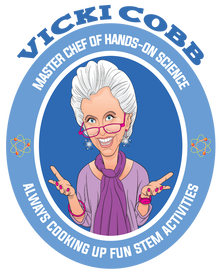 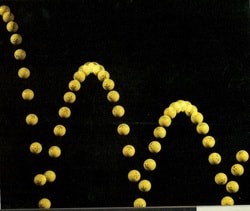 You can’t play tennis unless you know where the ball will be after it bounces. You can’t pass a basketball unless you understand how to angle a bounce so that it goes where you want it to go. As long as the court surface is smooth and flat, a ball’s bounce is very predictable. Its path depends on gravity and on the strength and direction of the force that sets the ball in motion. Thanks to high speed photography we can get a closer look at a bouncing ball. This is a multiple exposure photograph of a bouncing ball. It was taken in complete darkness with the camera shutter open while a high-speed flashing light, called a stroboscope or strobe, flashed 30 times a second. Each flash produced an image. Here’s what you can learn from this photo: The ball is moving fastest where the images are farthest apart and slowest where they are closest together. When the ball is falling, it speeds up. After it bounces and moves opposite the pull of gravity, it slows down at exactly the same rate as it sped up when it was falling until it stops for an instant and starts falling again. Each time it collides with the ground, some energy is lost. That’s why each bounce loses altitude. If the bounce were perfect, no energy would be lost, every bounce would be as high as the last and the ball would bounce forever. A strobe also captures the split second when a tennis ball is struck by a racket. The collision flattens the ball, and stretches the strings and distorts the frame of the racket, all in .005 seconds. If these objects kept their distorted shapes, most of the force of the collision would be absorbed. But they are elastic—they restore themselves to their original shapes after they collide. This restoring force is transferred to the ball to change its direction and help add to the speed of the athlete’s swing. The fastest serve leaves a racket at 130 miles an hour. In a rally, a ball-racket collision changes direction of the ball so it is not as fast as a serve, maybe 70 miles per hour. Since the distance between images made by a strobe tells how fast an object is moving, strobes are part of the instruments used to measure the speed of balls from a tennis racket and a baseball pitcher. 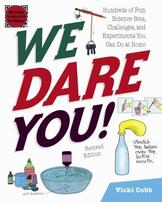 Would you believe that you could throw an egg across the room without breaking it? Burn a candle underwater? Vicki Cobb's We Dare You! is a gigantic collection of irresistible, easy-to-perform science experiments, tricks, bets, and games kids can do at home with everyday household objects. Thanks to the principles of gravity, mechanics, fluids, logic, geometry, energy, and perception, kids will find countless hours of fun with the selections included in this book. If you would like to make a We Dare You Video, click here. Vicki Cobb is a member of iNK's Authors on Call and is available for classroom programs through Field Trip Zoom, a terrific technology that requires only a computer, wifi, and a webcam. Click here to find out more. MLA 8 Citation
Cobb, Vicki. "A Bouncing Ball Like You've Never Seen." Nonfiction Minute, iNK Think Tank, 5 Feb. 2018, www.nonfictionminute.org/the-nonfiction-minute/ a-bouncing-ball-like-you've-never-seen.
In spring 1665 a college student named Isaac Newton studied natural philosophy, what we call “science.” Back then, a good student could learn everything to know about the natural world. But plague, the Black Death, came to England. Cambridge University closed. Isaac went home to Woolsthorpe. For two years Isaac thought about his studies during four years at university. He’d always been thoughtful—not the best at games, making friends, or minding sheep. But everybody knew Isaac Newton liked to think. Folks told time by the sundial he’d drawn on a wall. Home at Woolsthorpe, Isaac’s learning about science and math bubbled up in his head like yeast rising in a loaf of bread. So... Newton unplugged. His mind roamed like that of an artist or composer. He was driven by the need to create—not paintings or symphonies, but questions. “Why do things always fall down?” “Why does the earth move around the sun? “Why doesn’t the moon fall onto the earth?” “Does everything ‘up there” work like things work ‘down here?’” Isaac Newton answered his questions with three science rules, Newton’s Laws of Motion. At Woolsthorpe, Newton grappled with the concept of moving objects. He worked out the math to find the area under curves. He called this math fluxions. Today we call this calculus, useful for launching rockets or tracking TV signals. Once back at Cambridge, Newton said nothing until he read someone else’s paper on fluxions. Newton published a better paper. Soon he was Cambridge’s top math professor. Isaac Newton wondered another twenty years. He played with prisms in a dark room and theorized that white light comprises the visible spectrum of red, orange, yellow, green, blue, indigo, and violet. He practiced alchemy and chemistry, looking for the legendary philosopher’s stone to turn base metals to gold. In 1687, Newton published our most important science book, the Principia. In the Principia, Newton showed how laws of gravity and motion work the same at great distances—far off in space, or in your classroom. We accept these ideas, but in 1687 many still had medieval beliefs that sun, moon, planets, and stars all traveled in their own crystal spheres. Yes, Newton wondered about A LOT:
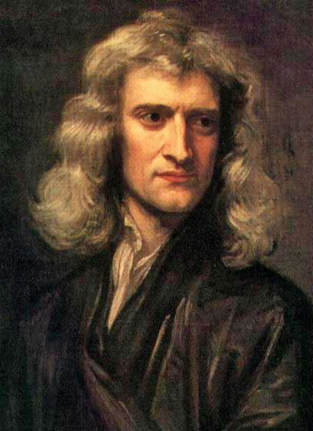 Sir Isaac Newton was an English mathematician, astronomer, theologian, author and physicist who is widely recognized as one of the most influential scientists of all time and a key figure in the scientific revolution. Based on a portrait by Godfrey Kneller, 1702, via Wikimedia Commons Sir Isaac Newton's own first edition copy of his Philosophiae Naturalis Principia Mathematica with his handwritten corrections for the twentieth edition. Photograph Andrew Dunn via Wikimedia Commons Trinity College, the part of the University of Cambridge where Newton worked and lived. Library of Congress This statue of the young Isaac Newton stands at the Oxford University Museum of Natural History. Look carefully around his feet for a hint on what he is wondering about. If you can’t figure it out, then read about Newton and gravity. Wikimedia Commons 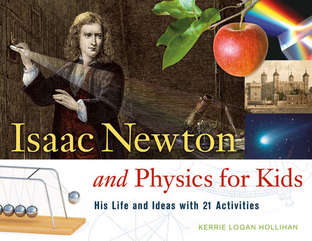 Featuring 21 hands-on projects that explore the scientific concepts Isaac Newton developed, Kerrie Logan Hollihan's Isaac Newton and Physics for Kids paints a rich portrait of the brilliant and complex man and provides readers with a hands-on understanding of astronomy, physics, and mathematics. A time line, excerpts from Newton's own writings, online resources, and a reading list enhance this unique activity book. MLA 8 Citation
Hollihan, Kerrie Logan. "Isaac Newton's Wonder Years." Nonfiction Minute, iNK Think Tank, 21 Feb. 2018, www.nonfictionminute.org/the-nonfiction-minute/ isaac-newtons-wonder years. Today is International Waffle Day! It originated in Sweden, probably due to confusion between the Swedish words Våffeldagen (Waffle Day) and Vårfrudagen (“Our Lady’s Day”), which also falls on March 25. Vårfrudagen marks the Annunciation, when the archangel Gabriel tells the Virgin Mary that she will become the mother of Jesus Christ. Despite this coincidence, International Waffle Day has no religious significance. In Sweden, the date is the traditional start of spring and Swedes (and many people throughout the world) celebrate by—you guessed it—eating waffles. Historians date the origin of waffles back to the ancient Greeks, who cooked flat cakes called obleios between two hot metal plates. In the 1200s, an unknown European craftsman invented plates with the honeycomb pattern that characterize waffles. Waffles reportedly came to the New World in 1620 with the Pilgrims. Americans also celebrate National Waffle Day on August 24. On this date in 1869, Cornelius Swartwout received the first U.S. patent for a waffle iron. Designed for use on top of coal-burning stoves, it consisted of a cast-iron griddle and cover joined by a hinge. A handle and clasp prevented the cook from being burned. When the batter was poured in, it would cook for a few minutes and then the iron would be flipped over to cook the other side. The widespread use of electricity in the early 1900s resulted in the development of the electric waffle iron, making it easy to produce one of the most popular breakfast foods. Waffles have another distinction. About 1971, University of Oregon track coach Bill Bowerman was experimenting with new soles for running shoes. He wanted something to provide traction and stability, yet lighter in weight than current models. Looking at his wife’s waffles gave him an idea. He poured rubber into her waffle iron and let it cook for a few minutes. He removed it, let it harden, then cut it to the proper shape. His experiments ruined the waffle iron, but they resulted in a new shoe called the Waffle Trainer. Bowerman joined businessman Phil Knight, one of his former runners, and founded the Nike Shoe Company to market the Waffle Trainer. The shoe created a sensation among runners of all levels of ability. Today Nike is almost synonymous with running shoes and other athletic footwear. |
*NEWS
|
For Vicki Cobb's BLOG (nonfiction book reviews, info on education, more), click here: Vicki's Blog
The NCSS-CBC Notable Social Studies Committee is pleased to inform you
that 30 People Who Changed the World has been selected for Notable Social Studies Trade Books for Young People 2018, a cooperative project of the National Council for the Social Studies (NCSS) & the Children’s Book Council
Categories
All
Abolitionists
Adams Janus
Adaptation
Adaptations
Adkins Jan
Advertising
Aerodynamics
Africa
African American History
African Americans
Africa West
Agriculture
Aircraft
Air Pilots
Air Pressure
Air Travel
Albee Sarah
Alchemy
Alligators
Allusion
American History
American Icons
Amphibians
Amundsen Roald
Anatomy
Ancient
Ancient Cultures
Anderson Marian 1897-1993
Animal Behavior
Animal Experimentation
Animal Intelligence
Animals
Animation
Antarctica
Ants
Apache Indians
Apes
April Fool's Day
Architecture
Argument
Arithmetic
Art
Art Deco
Artists
Arts
Asia
Astronauts
Astronomy
Athletes
Atomic Theory
Audubon Societies
Authors
Autobiography
Automobiles
Aviation
Awards
Bacteria
Baseball
Battuta Ibn
Bears
Beatles
Beavers
Bees
Biodegradation
Biography
Biology
Biomes
Biomimicry
Biplanes
Birds
Black Death
Black History
Blindness
Blizzards
Bombs
Bonaparte Napoleon
Boone Daniel
Botany
Brazil
Bridges
Brill Marlene Targ
Brooklyn Bridge
Brown John
Buffaloes
Building Materials
Butterflies
Caesar
Caesar Julius
Caissons
Calculus
Calendars
Cannibal
Capitals
Caravaggio
Carbon Dioxide
Carnivores
Carson Mary Kay
Cartoons & Comics
Carving (Decorative Arts)
Cascade Range
Castaldo Nancy
Castles
Castrovilla Selene
Cathedrals
Cats
Caves
Celts
Cemeteries
Chemistry
Children's Authors
Child Welfare
China
Choctaw Indians
Christmas
Chronometers
Cicadas
Cinco De Mayo
Ciphers
Circle
Citizenship
Civil Rights
Civil Rights Movements
Civil War
Civil War - US
Climate
Climate Change
Clocks And Watches
Clouds
Cobb Vicki
COBOL (Computer Language)
Code And Cipher Stories
Collard III Sneed B.
Collectors And Collecting
Color
Commerce
Communication
Competition
Compilers
Composers
Computers
Congressional Gold Medal
Consitution
Contests
Contraltos
Coolidge Calvin
Cooling
Corms
Corn
Counterfeiters
Covid-19
Crocodiles
Cryptography
Culture
Darwin Charles
Declaration Of Independence
Decomposition
Decompression Sickness
Deep-sea Animals
Deer
De Medici Catherine
Design
Detectives
Dickens Charles
Disasters
Discrimination
Diseases
Disney Walt
DNA
Dogs
Dollar
Dolphins
Douglass Frederick 1818-1895
Droughts
Dr. Suess
Dunphy Madeleine
Ear
Earth
Earthquakes
Ecology
Economics
Ecosystem
Edison Thomas A
Education
Egypt
Eiffel-gustave-18321923
Eiffel-tower
Einstein-albert
Elephants
Elk
Emancipationproclamation
Endangered Species
Endangered-species
Energy
Engineering
England
Englishlanguage-arts
Entomology
Environmental-protection
Environmental-science
Equinox
Erie-canal
Etymology
Europe
European-history
Evolution
Experiments
Explorers
Explosions
Exports
Extinction
Extinction-biology
Eye
Fairs
Fawkes-guy
Federalgovernment
Film
Fires
Fishes
Flight
Floods
Flowers
Flute
Food
Food-chains
Foodpreservation
Foodsupply
Food-supply
Football
Forceandenergy
Force-and-energy
Forensicscienceandmedicine
Forensic Science And Medicine
Fossils
Foundlings
France
Francoprussian-war
Freedom
Freedomofspeech
French-revolution
Friction
Frogs
Frontier
Frontier-and-pioneer-life
Frozenfoods
Fugitiveslaves
Fultonrobert
Galapagos-islands
Galleys
Gametheory
Gaudi-antoni-18521926
Gender
Generals
Genes
Genetics
Geography
Geology
Geometry
Geysers
Ghosts
Giraffe
Glaciers
Glaucoma
Gliders-aeronautics
Global-warming
Gods-goddesses
Gold-mines-and-mining
Government
Grant-ulysses-s
Grasshoppers
Gravity
Great-britain
Great-depression
Greece
Greek-letters
Greenberg Jan
Hair
Halloween
Handel-george-frederic
Harness Cheryl
Harrison-john-16931776
Health-wellness
Hearing
Hearing-aids
Hearst-william-randolph
Henry-iv-king-of-england
Herbivores
Hip Hop
History
History-19th-century
History-france
History-world
Hitler-adolph
Hoaxes
Holidays
Hollihan Kerrie Logan
Homestead-law
Hopper-grace
Horses
Hot Air Balloons
Hot-air-balloons
Housing
Huguenots
Human Body
Hurricanes
Ice
Icebergs
Illustration
Imagery
Imhotep
Imperialism
Indian-code-talkers
Indonesia
Industrialization
Industrial-revolution
Inquisition
Insects
Insulation
Intelligence
Interstatecommerce
Interviewing
Inventions
Inventors
Irrational-numbers
Irrigation
Islands
Jacksonandrew
Jazz
Jeffersonthomas
Jefferson-thomas
Jemisonmae
Jenkins-steve
Jet-stream
Johnsonlyndonb
Jokes
Journalism
Keeling-charles-d
Kennedyjohnf
Kenya
Kidnapping
Kingmartinlutherjr19291968
Kingmartinlutherjr19291968d6528702d6
Kings-and-rulers
Kings Queens
Kings-queens
Koala
Labor
Labor Policy
Lafayette Marie Joseph Paul Yves Roch Gilbert Du Motier Marquis De 17571834
Landscapes
Languages-and-culture
Law-enforcement
Layfayette
Levers
Levinson Cynthia
Lewis And Clark Expedition (1804-1806)
Lewis Edmonia
Liberty
Lift (Aerodynamics)
Light
Lindbergh Charles
Liszt Franz
Literary Devices
Literature
Lizards
Longitude
Louis XIV King Of France
Lumber
Lunar Calendar
Lynching
Macaws
Madison-dolley
Madison-james
Madison-james
Mammals
Maneta-norman
Maneta-norman
Marathon-greece
Marine-biology
Marine-biology
Marines
Marsupials
Martial-arts
Marx-trish
Mass
Massachusetts-maritime-academy
Mass-media
Mastodons
Mathematics
May-day
Mcclafferty-carla-killough
Mcclafferty-carla-killough
Mckinley-william
Measurement
Mechanics
Media-literacy
Media-literacy
Medicine
Memoir
Memorial-day
Metaphor
Meteorology
Mexico
Mickey-mouse
Microscopy
Middle-west
Migration
Military
Miners
Mississippi
Molasses
Monarchy
Monsters
Montgomery
Montgomery-bus-boycott-19551956
Montgomery-heather-l
Monuments
Moon
Moran-thomas
Morsecode
Morsesamuel
Moss-marissa
Moss-marissa
Motion
Motion-pictures
Mummies
Munro-roxie
Munro-roxie
Musclestrength
Museums
Music
Muslims
Mythologygreek
Nanofibers
Nanotechnology
Nathan-amy
Nathan-amy
Nationalfootballleague
Nationalparksandreserves
Nativeamericans
Native-americans
Native-americans
Naturalhistory
Naturalists
Nature
Nauticalcharts
Nauticalinstruments
Navajoindians
Navigation
Navy
Ncaafootball
Nervoussystem
Newdeal19331939
Newman-aline
Newman-aline
Newton-isaac
New-york-city
Nobelprizewinners
Nomads
Nonfictionnarrative
Nutrition
Nylon
Nymphs-insects
Oaths Of Office
Occupations
Ocean
Ocean-liners
Olympics
Omnivores
Optics
Origami
Origin
Orphans
Ottomanempire
Painters
Painting
Paleontology
Pandemic
Paper-airplanes
Parksrosa19132005
Parrots
Passiveresistance
Patent Dorothy Hinshaw
Peerreview
Penguins
Persistence
Personalnarrative
Personification
Pets
Photography
Physics
Pi
Pigeons
Pilots
Pinkertonallan
Pirates
Plague
Plains
Plainsindians
Planets
Plantbreeding
Plants
Plastics
Poaching
Poetry
Poisons
Poland
Police
Political-parties
Pollen
Pollution
Polo-marco
Populism
Portraits
Predation
Predators
Presidentialmedaloffreedom
Presidents
Prey
Prey-predators
Prey-predators
Prime-meridian
Pringle Laurence
Prohibition
Proteins
Protestandsocialmovements
Protestants
Protestsongs
Punishment
Pyramids
Questioning
Radio
Railroad
Rainforests
Rappaport-doreen
Ratio
Reading
Realism
Recipes
Recycling
Refrigerators
Reich-susanna
Religion
Renaissance
Reproduction
Reptiles
Reservoirs
Rheumatoidarthritis
Rhythm-and-blues-music
Rice
Rivers
Roaringtwenties
Roosevelteleanor
Rooseveltfranklind
Roosevelt-franklin-d
Roosevelt-theodore
Running
Russia
Safety
Sanitation
Schwartz David M
Science
Scientificmethod
Scientists
Scottrobert
Sculpture
Sculpturegardens
Sea-level
Seals
Seals-animals
Secretariesofstate
Secretservice
Seeds
Segregation
Segregationineducation
Sensessensation
September11terroristattacks2001
Seuss
Sextant
Shackletonernest
Shawneeindians
Ships
Shortstories
Silkworms
Simple-machines
Singers
Siy Alexandra
Slavery
Smuggling
Snakes
Socialchange
Social-change
Socialjustice
Social-justice
Socialstudies
Social-studies
Social-studies
Sodhouses
Solarsystem
Sound
Southeast-asia
Soybean
Space Travelers
Spain
Speech
Speed
Spiders
Spies
Spiritualssongs
Sports
Sports-history
Sports-science
Spring
Squirrels
Statue-of-liberty
STEM
Storms
Strategy
Sugar
Sumatra
Summer
Superbowl
Surgery
Survival
Swanson-jennifer
Swinburne Stephen R.
Synthetic-drugs
Taiwan
Tardigrada
Tasmania
Tasmanian Devil
Tasmanian-devil
Technology
Tecumsehshawneechief
Telegraph-wireless
Temperature
Tennis
Terrorism
Thomas Peggy
Thompson Laurie Ann
Time
Titanic
Tombs
Tortoises
Towle Sarah
Transcontinental-flights
Transportation
Travel
Trees
Trung Sisters Rebellion
Tundra
Turnips
Turtles
Typhoons
Underground Railroad
Us-environmental-protection-agency
Us History
Us-history
Ushistoryrevolution
Us History Revolution
Us-history-war-of-1812
Us Presidents
Ussupremecourtlandmarkcases
Vacations
Vaccines
Vangoghvincent
Vegetables
Venom
Vietnam
Viruses
Visual-literacy
Volcanoes
Voting-rghts
War
Warne-kate
Warren Andrea
Washington-dc
Washington George
Water
Water-currents
Wax-figures
Weapons
Weather
Weatherford Carole Boston
Whiting Jim
Wildfires
Winds
Windsor-castle
Wolves
Woman In History
Women
Women Airforce Service Pilots
Women-airforce-service-pilots
Womeninhistory
Women In History
Women-in-science
Women's History
Womens-roles-through-history
Wonder
Woodson-carter-godwin-18751950
World-war-i
World War Ii
World-war-ii
Wright Brothers
Writing
Writing-skills
Wwi
Xrays
Yellowstone-national-park
Zaunders Bo
ArchivesMarch 2021
February 2021
January 2021
December 2020
November 2020
October 2020
September 2020
June 2020
May 2020
April 2020
March 2020
February 2020
January 2020
December 2019
October 2019
September 2019
August 2019
July 2019
May 2019
April 2019
March 2019
February 2019
January 2019
December 2018
November 2018
September 2018
June 2018
May 2018
April 2018
March 2018
February 2018
January 2018
December 2017
November 2017
October 2017
September 2017
March 2017
The NONFICTION MINUTE, Authors on Call, and. the iNK Books & Media Store are divisions of iNK THINK TANK INC.
a 501 (c) (3) nonprofit corporation. To return to the iNK Think Tank landing page click the icon or the link below. :
http://inkthinktank.org/
For more information or support, contact thoughts@inkthinktank.org
For Privacy Policy, go to
Privacy Policy
© COPYRIGHT the Nonfiction Minute 2020.
ALL RIGHTS RESERVED.
This site uses cookies to personalize your experience, analyze site usage, and offer tailored promotions. www.youronlinechoices.eu
Remind me later
Archives
March 2023
February 2023
January 2023
December 2022
November 2022
October 2022
September 2022
June 2022
May 2022
April 2022
March 2022
February 2022
January 2022
December 2021
November 2021
September 2021
April 2021
March 2021
February 2021
November 2020
October 2020
September 2020
June 2020
May 2020
April 2020
March 2020
February 2020
January 2020
October 2019
August 2019
July 2019
May 2019
April 2019
December 2018
September 2018
June 2018
May 2018
March 2018
February 2018
January 2018
December 2017
November 2017
October 2017
September 2017


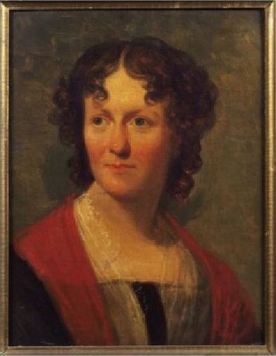
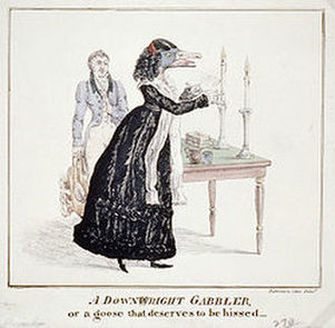


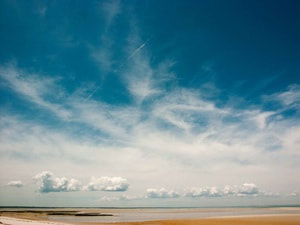
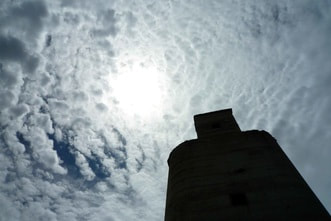
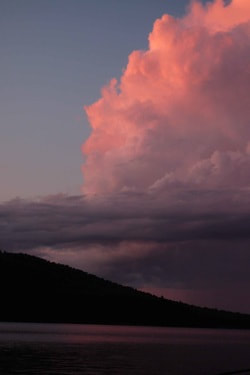
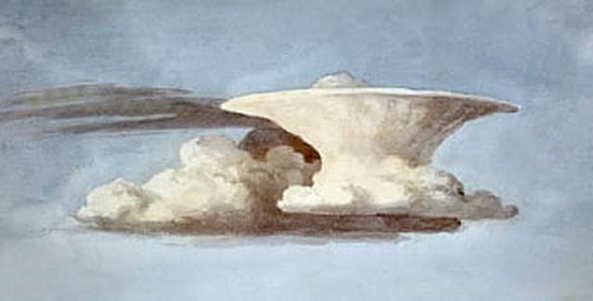


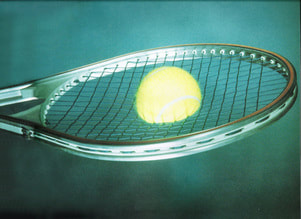

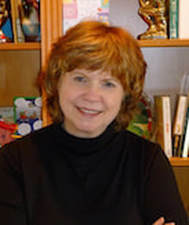

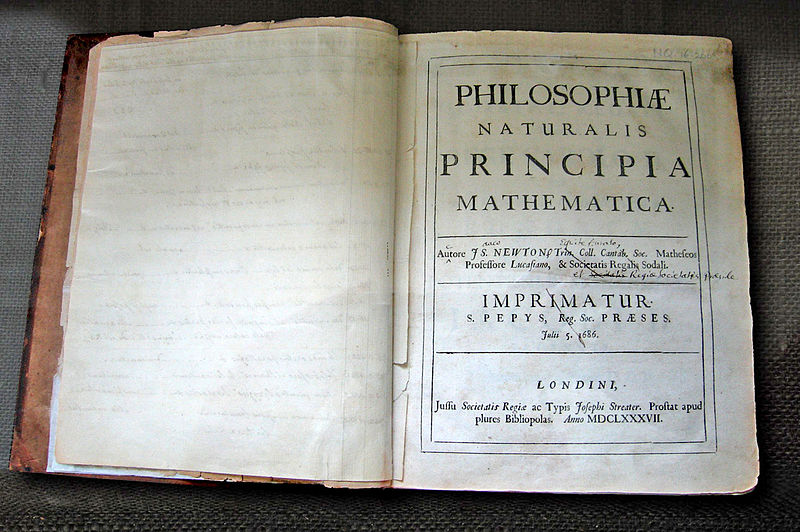
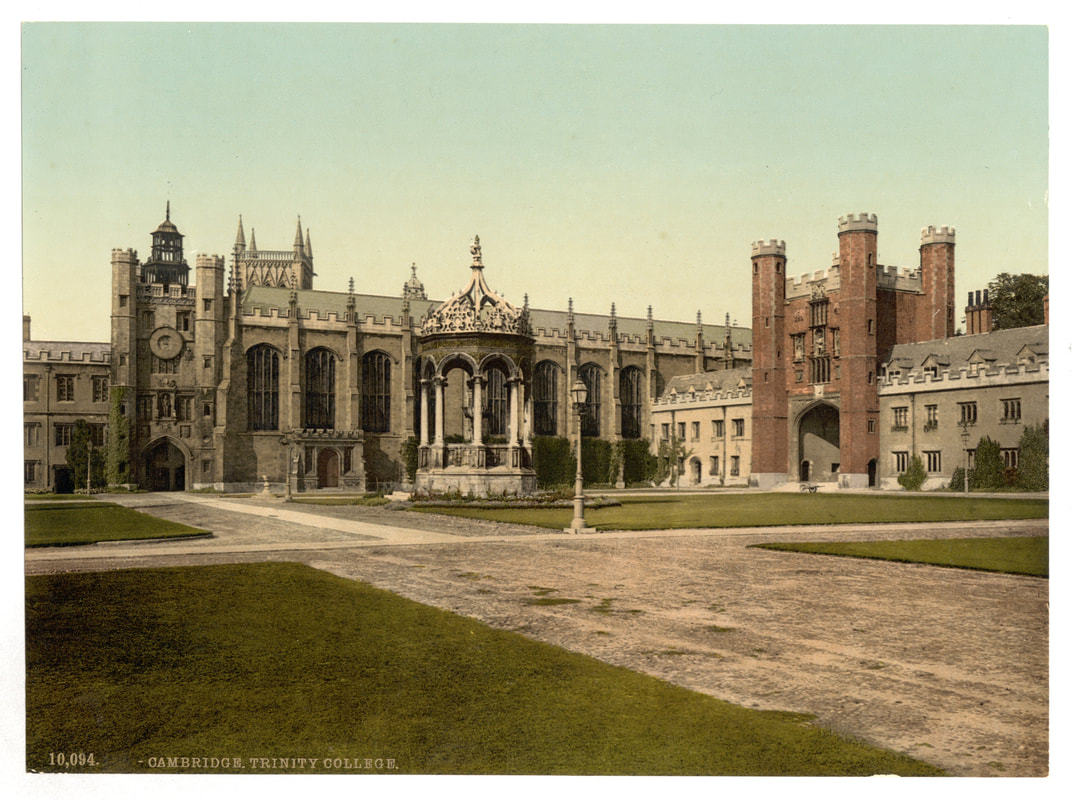
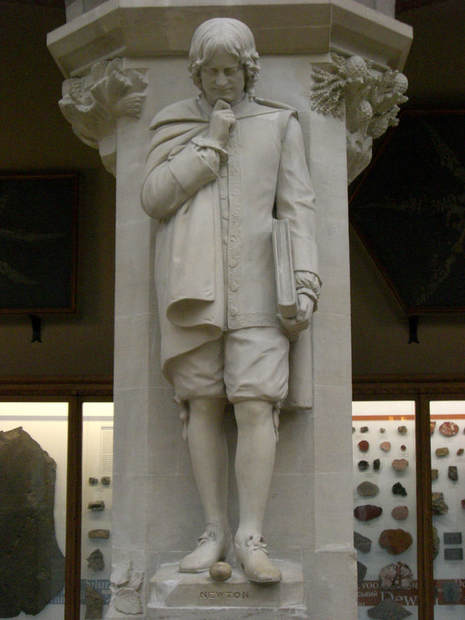

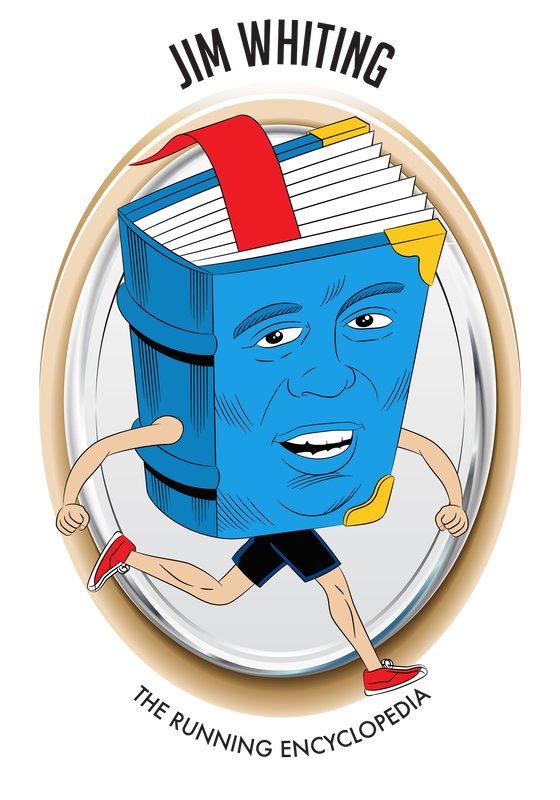



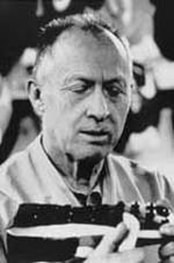

 RSS Feed
RSS Feed
